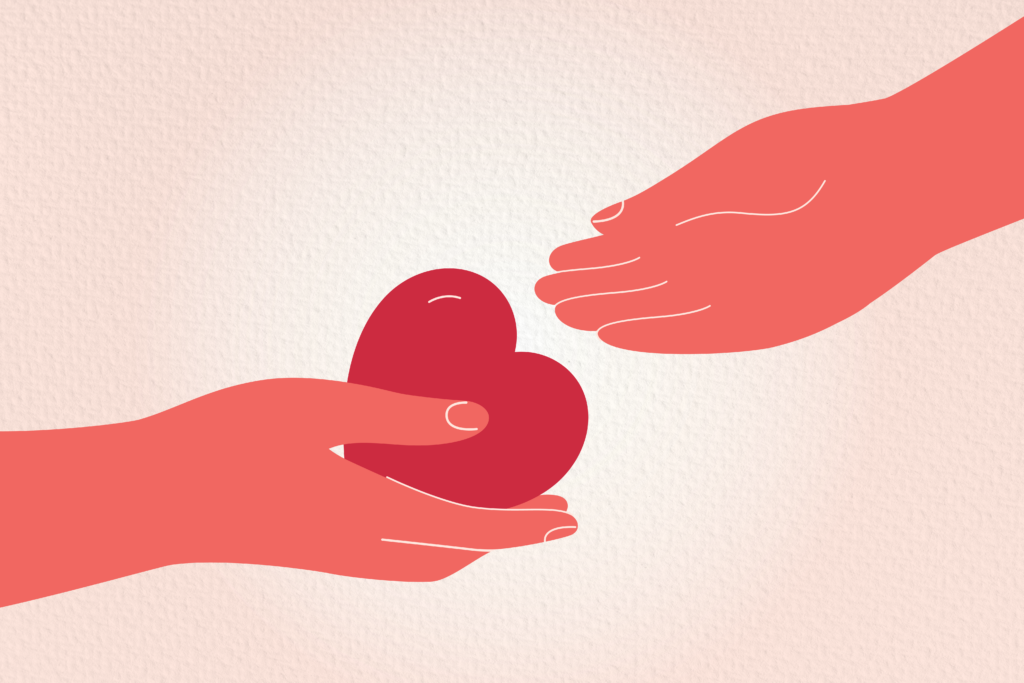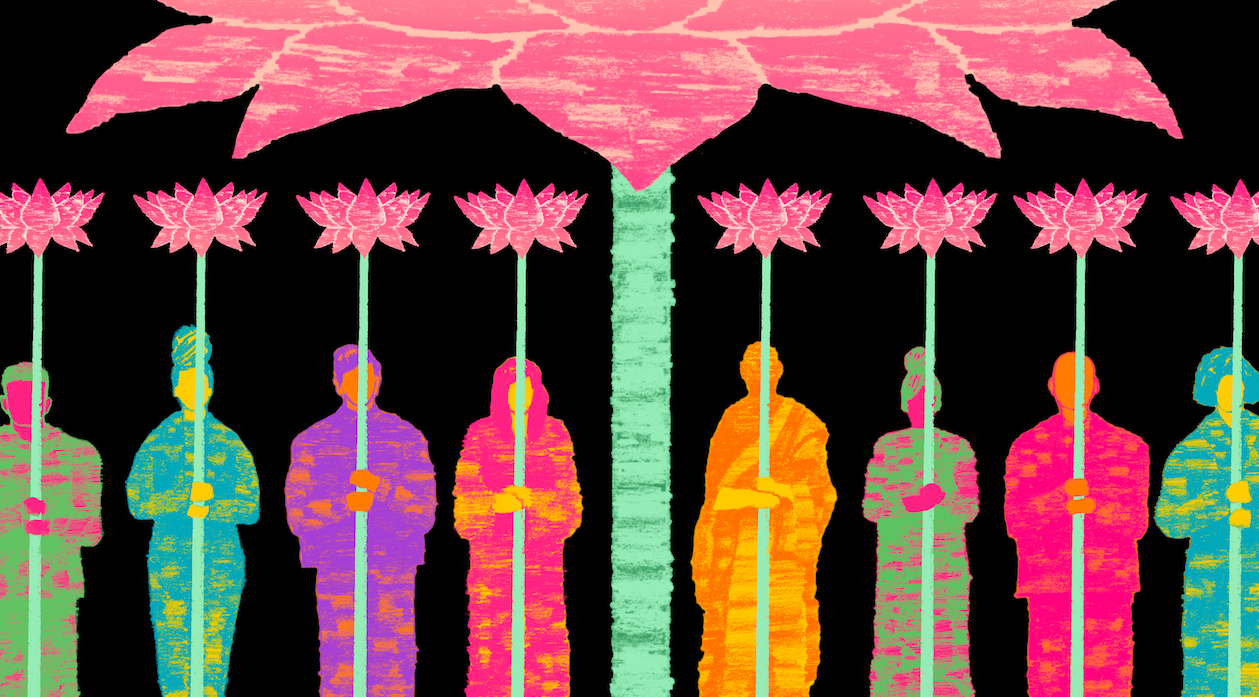Compassion in Action: Showing Up Even When We Want to Shut Down
Compassion disrupts our default habit of judging by seeking to understand and recognize our interconnectedness, generating a genuine desire to help. The post Compassion in Action: Showing Up Even When We Want to Shut Down appeared first on Mindful.

As human beings, we desire to be empathetic and understanding toward the people we work and live with, but it can be so hard when we enter into heated conversations, especially if things reach an impasse. In such moments, when we feel disconnected from our natural capacity for compassion, it can be beneficial to remember what the different components of compassion are so that we can return to it.
Empathy, Sympathy, and the Five Components of Compassion
It’s easy to mix compassion with empathy or sympathy. While empathy involves feeling others’ pain and understanding their perspective, compassion goes one step further toward doing something about it. Sympathy involves caring about the suffering but from a distance, which often sounds something like, “Poor you,” with the subtext, “Thank God it’s not me.” Any motivation to help because of pity is not guided by our shared humanity but by fear and separation. When we experience sympathy, we’re also experiencing discomfort, which creates a desire to fix the problem, rather than truly being there for the person.
When it comes to being mindful in the real world, understanding the difference between sympathy, empathy, and compassion is a must. Sympathy involves observing others’ suffering with detachment and is often accompanied by judgment, while empathy enables us to step into someone else’s shoes and feel their pain. However, compassion surpasses empathy by generating a genuine desire to help.
Compassion surpasses empathy by generating a genuine desire to help.
In an increasingly divided world, sympathy, though well-intentioned, has the potential to widen the chasm between individuals. It can inadvertently reinforce differences between those who offer help and those who need help. However, compassion invites us to recognize and embrace our interconnectedness through the lens of our shared humanity. The helpers and those being helped are seen as equally important members of an interdependent ecosystem, each one contributing in unique ways at different points in time. Compassion holds the power to bridge gaps, foster understanding, and promote peace and collective well-being.
Empathy without compassion can be detrimental to how we experience suffering, resulting in empathic distress, also known as empathy fatigue, which can lead to despair and hopelessness. When we’re exposed to the injustices in our world, racial discrimination, climate change, or the extreme poverty in which so many young children live, it’s easy to start feeling overwhelmed. However, as soon as we return to compassion—and shifting attention to what actions we can take to help, however small they may be—we can feel motivated and hopeful.
The 5 Components of Compassion
Compassion is more comprehensive and effective than empathy. It encompasses the following five components that give it the power to transform suffering:
Recognizing the struggle Understanding the universality of human suffering Feeling empathy for the people involved Tolerating the discomfort that arises in response to the suffering person (e.g., distress, shame, anger, fear) Being motivated to alleviate sufferingTo summarize, compassion is our ability to feel, understand, and be motivated to alleviate suffering in ourselves and others based on an understanding of shared human experiences.
Compassion in Action
When I don’t naturally feel compassionate, remembering the different aspects of compassion helps me return to a kinder place within. The first step when I am triggered is to stop and recognize that I am struggling. Once I do, I place my hand on my heart, which helps me move away from a reactive mental space to a calmer heart-centered space.
Just this stopping and returning to a more compassionate space reminds me that struggling is a shared human experience, and I am not alone in feeling this way. This normalizes my discomfort; it becomes easier to be with it. Then I can turn toward my colleagues, actively seeking to understand their perspectives. What might they know that I don’t? What are their intentions? What are my intentions in this situation? What are the commonalities in our perspectives? By asking questions instead of rushing to judge and declare my perspective, I make room for more information to shape my understanding and make more informed decisions.
It’s still a messy process. I’m not always sure that I made the right decision. But my commitment to compassion—seeking to understand the perspectives of all involved and to take actions that benefit all involved—gives me the courage to show up with an open mind and heart, even when I want to shut down or walk away.
Compassion cuts through our judgments and reveals our shared humanity. Yet, the pull of a judging mind is so strong that it can be hard to disrupt the momentum of judgments. Can you think of situations in which your judging mind overtakes your desire for empathy and understanding?
Recognizing Our Interconnection
All things in the universe are connected through a chain of relationships. Even something basic like water involves a web of interconnections between people, systems, and nature. These interconnections seem obvious, but they can elude us when we’re in the middle of a difficult conversation or a challenging situation that divides people into “us versus them.” In those moments, we’re focusing on a slice of reality that’s distinct from the whole. And yet, as Martin Luther King Jr. reminded us in his famous letter from Birmingham jail, “We are caught in an inescapable network of mutuality, tied in a single garment of destiny. Whatever affects one directly affects all indirectly.” When we view situations through the lens of interbeing, we see that our needs are not competing with those of others; they’re interdependent. This is similar to the concept of Ubuntu in the Xhosa culture, which has been translated to mean, “I am because we are.”
Imagine if we dissolve our judgments with the understanding of the causes and conditions that make people think and act the way they do. Then we can direct our resources toward changing systems, processes, and behaviors that are harmful rather than punishing the individuals who are merely a product of those systems. When we learn to clasp each other’s hands and run together like the children in the Xhosa culture, we, too, can share the fruits of our shared victory. We, too, can learn to be truly happy by reminding ourselves and each other, “We are interconnected.”
Where Are You on the Compassion Continuum?
Returning to compassion in ourselves involves disrupting our default habits such as rushing to judge, defending our ways of thinking, and avoiding suffering. The more we practice and play with compassion practices and reminders, the stronger we become at facing our differences with an open mind and heart.
Excerpted from the book Return to Mindfulness: Disrupting Default Habits for Personal Fulfillment, Effective Leadership, and Global Impact by Shalini Bahl Milne. Copyright © 2024 Shalini Bahl Milne. Republished with permission from the author.

 Aliver
Aliver 
































